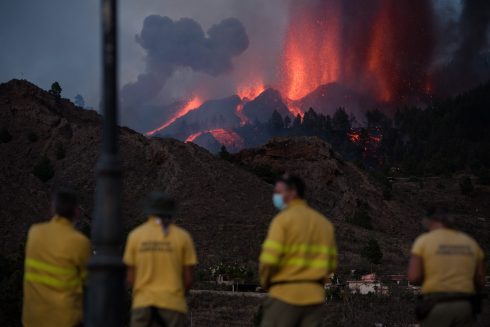WITHIN the last two years alone, Spain has been hit by the biggest snowfall in living memory (Storm Filomena), a volcanic eruption (La Palma), not to mention countless wildfires, floods and heatwaves. And a pandemic.
In times of emergency, people were expected to keep up with developments by following the news and official government channels to keep them informed.
But now Spain is poised to introduce a public warning system (PWS) that will inform people direct to their mobile phone.
Here’s what we know so far.
How does the system work?

Development of Spain’s PWS began last October and will use ‘Cell Broadcast Technology’ to tap into mobile phone networks within coverage of a particular antenna and send them all the same SMS message.
“The antennas will radiate, as a broadcast or transmission, the alert to all the terminals that are connected to them,” explained a spokesperson from Indra which is developing the system.
Who will get the warnings?

The broadcast system means that anyone with a compatible mobile phone will receive the alert, regardless of whether they have a Spanish phone contract or are resident in Spain.
The system means it will be picked up by all compatible mobile phones that are using that mobile mast for service.
As yet, we haven’t been told which models of smart phones will be compatible but it is likely to be anything that was new within the last few year.
What will happen?
A message will pop up on the screen along with an alarm sound.
The message won’t just disappear after a few seconds but will continue beeping until the user has verified that the message has been read.
Unlike SMS which can take several hours to receive, these messages will be instant.
A spokesperson from the Protecion Civil told El Pais the broadcasts are “ultra-fast, works in real time, occupies very little bandwidth and is automatic for all devices in the area.”
In certain disaster situations when reacting fast is essential, such an alarm system could be life-saving.
Messages would be broadcast in Spanish and English and may well include other languages if a high number of foreign registered phones were detected within that area.
What is an emergency?

The messages will be issued by those that run the 112 emergency service, direct from the Department of Civil Protection at Spain’s Ministry of Interior.
And could be localised in one small zone, across a larger area or the entire country.
The messages can be activated when danger reaches level amber or red in the three-tier traffic light alert system.
For example, such an alert system would have been hugely useful when the Cumbre Vieja volcano on the Canary Island of La Palma began to erupt last September. It could have been used to tell residents in certain areas that it was time to evacuate because of approaching lava.
It could also have given residents pre-warning when Storm Filomena hit central Spain in January 2021 and could warn those living in an area threatened by wildfire that it was time to leave.
When it is being introduced?
Authorities have yet to announce an official launch date but Spanish media reported that it should be in place in time for summer.
READ MORE:
- What you should know before buying an electric car in Spain
- Autonomo: What you need to know about being self-employed in Spain
- ‘Digital Nomad visa’ and tax breaks: What we know about Spain’s plans to attract remote workers
Click here to read more News from The Olive Press.








